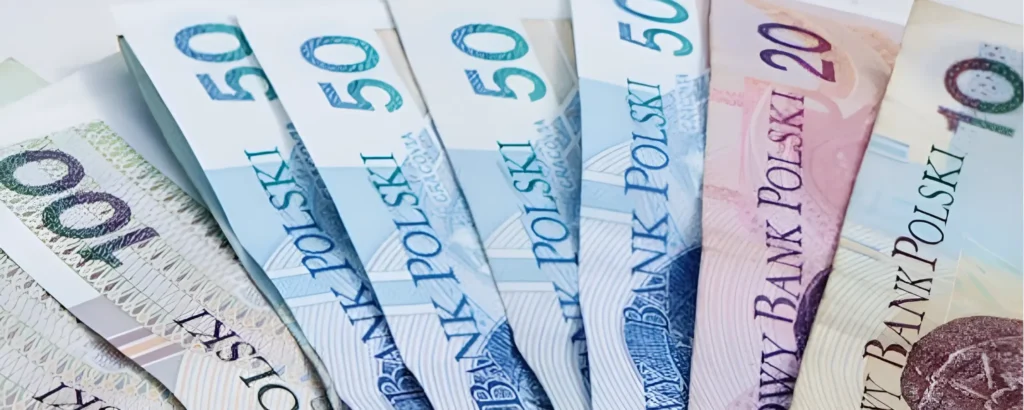Currency pairs that fluctuate wildly in value over short periods present greater risk but also an opportunity for forex traders. Volatile pairs experience large price swings and rapid movements up or down daily. For traders, high volatility implies the potential for large profits from well-timed trades but also the risk of sizable losses if trades move against positions.
This article will analyze some of the most volatile currency pairs traded in global forex markets. We’ll explore what economic, political, and market factors tend to drive large intraday price fluctuations.
AUD/JPY – Risk On/Off Barometer
The Australian dollar-Japanese yen (AUD/JPY) cross is among the most volatile currency pairs. Daily ranges often exceed 150 pips during periods of market stress or heightened global risk aversion. Due to Australia’s commodity-linked economy and Japan’s safe-haven status as a net creditor nation, AUD/JPY acts as a barometer of risk sentiment.
When investors flee riskier assets, funds flow from the high-yielding Aussie into the low-yield safe-haven yen. Even unsubstantiated risk-off triggers like tweets can inject sharp volatility. However, positive investor risk appetite sees money rotating rapidly back into AUD. The RBA and BOJ pursue divergent monetary policies, amplifying fluctuations in the cross.
NZD/JPY – Volatile Currency Pairs

Similar dynamics drive volatility in the New Zealand dollar/yen (NZD/JPY). As an economy reliant on global trade and commodity prices, New Zealand’s currency fluctuates wildly with shifts in market sentiment. Any disruption to China’s industrial demand sends shockwaves through the currency. Like Australia, New Zealand also offers higher interest rates than Japan.
The cross also correlates strongly to capital flows in and out of emerging market assets and commodity currencies. Sudden risk-off episodes see money flee the high beta NZD rapidly into the haven JPY. Simultaneously, buyers are rapidly reinvesting in the Nzd due to their bullish risk appetite. Daily moves range between 80-150 pips depending on market uncertainty levels.
USD/MXN – Geopolitical Wildcard
Political risks associated with Mexico’s northern neighbor, the United States, impart notable volatility onto the US dollar-Mexican peso (USD/MXN) currency pair. Periods of trade tensions, migration issues, and uncertainty over the NAFTA treaty negotiations have triggered massive sell-offs in the peso.
Wild intraday 150+ pip swings ensued on tweets or unexpected policy decisions out of Washington. Given Mexico’s export reliance on its northern market, the peso acts as a geopolitical weather vane. Sudden changes to America’s stance on trade deals inject fear and risk aversion into EM assets like the peso.
Other high-beta LATAM currencies like the Brazilian real (BRL), Chilean peso (CLP), and Colombian peso (COP) also correlate strongly to USD/MXN volatility driven by cross-border spillovers. Any deterioration in US-Mexico economic and political relations fuels wild peso gyrations.
EUR/PLN – Reflation Risks from Europe

In emerging Europe, the euro/Polish zloty (EUR/PLN) is one of the most volatile currency pairs. Poland’s export-focused economy tracks closely with cyclical fluctuations in the Eurozone. When fears of slowing growth, deflation, or financial turmoil emerge from the region, money flees the Polish zloty rapidly into the euro haven.
Key events like the euro debt crisis of 2010-2012, Greek bailouts, and periods of quantitative easing fueled massive EUR/PLN volatility. Decreased capital flows into Poland and sell-offs in Polish stocks accompanied surges in risk aversion. Liquidity also dries up during periods of market distress, amplifying the volatility. The pair’s 150+ pip daily swings track closely with reflationary risks emanating from Europe.
USD/CAD – Commodity Crosswinds
As an economy closely tied to oil prices and global trade flows, Canada’s currency routinely experiences large fluctuations against the US dollar (USD/CAD). Shifts in crude oil volatility, China growth, and trade disputes inject crosswinds into the loonie. Events that roil energy, bulk, and base metal markets send shockwaves through the commodity currency.
Over 2018-2019, the escalating US-China trade war triggered steep USD/CAD gains as growth fears sapped oil demand. Pronounced 150+ pip daily whip swings ensued on each new trade announcement. Canada’s dependence on the US economy as an export market also amplifies spillovers from domestic political risks. Overall, the loonie absorbs volatility from multiple commodity and trade exposure channels.
AUD/CHF – Volatile Currency Pairs

The Australian dollar-Swiss franc (AUD/CHF) pairing gyrates strongly according to the ebb and flow of global risk appetite. Australia’s high yield, commodity links, and sensitivity to China make the Aussie a prominent proxy for trade and growth optimism. In contrast, Switzerland’s haven status via its stable debt and haven currency sees assets rotate rapidly between the two.
During periods of risky asset sell-offs, the Swissy strengthens sharply at the Aussie’s expense—regularly sparking over 100 pip daily AUD/CHF swings. However, positive risk trends unleash powerful Aussie buying flows against the low-yield franc. The cross serves as a high beta risk trend gauge, experiencing sharp appreciations or depreciations according to investors’ risk disposition.
EUR/SEK – Nordic Cycle Swings
The euro-Swedish krona (EUR/SEK) currency pair tracks the business cycles of Europe and Sweden tightly. When Eurozone growth picks up steam, exports to the large trading bloc stimulate the Swedish economy. Stronger Swedish growth and inflation spawn krona strength as rates rise. However, weakness or downturns in Europe reverberate back through Sweden via reduced exports and the krona accordingly weakens.
From 2010-2012, monetary easing, austerity, and debt crises roiled the euro area, driving sharp EUR/SEK volatility over 150 pips daily. More recently, milder swings correlated with shifting market perceptions of the European recovery. The cross acts as a bellwether of Nordic region/continental Europe economic synchronization.
Other Volatile Currency Pairs
Additional crosses involving emerging markets, commodities, or political wildcards like RUB/JPY, NOK/CAD, USD/ZAR, GBP/HKD, and EUR/TRY all experience consistently large daily fluctuations. Cryptocurrency pairs like BTC/USD or ETH/BTC fluctuate wildly due to speculator flows and lack of fundamentals. At times of increased global volatility, any high beta pairs involving risk proxies like AUD, and NZD experience sharp volatility spikes.
Conclusion | Most Volatile Currency Pairs
Due to economic, political, or market risks there are many volatile currency pairs. Pairs leveraged to commodities, trade, growth differentials, safe havens, and geopolitics tend to experience amplified fluctuations. While high volatility implies bigger potential profit opportunities, it also increases the risk of losses from rapid unexpected moves.
Understanding the micro and macro drivers of movements for different volatile pairs allows forex traders to position themselves accordingly. With prudent risk management, consistent volatility provides seasoned speculators avenues to capitalize on lasting global macro trends or transitory risk sentiment shifts. Overall, pairs exposed to event risk premiums historically experience the most price turbulence in forex markets.



